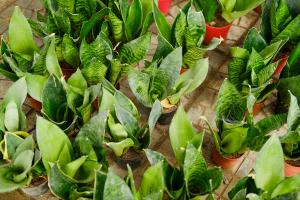How to Propagate My Rubber Tree Plant
Rubber tree plants are one of the most popular houseplants for their large and attractive leaves. If you are lucky enough to have an established rubber tree, you might wonder how to propagate it so that you can populate more areas of your home with it. Fortunately, propagating a rubber tree plant is relatively easy compared to other houseplants. In this article, we will go over some of the most effective methods for propagating your rubber tree plant.
Cuttings
Cutting is the most popular method for propagating rubber tree plants. You can use stem cuttings or leaf cuttings for propagation. However, stem cutting has a better chance of success. To take a stem cutting, choose a healthy stem that is around 6 inches long with at least one node, and cut it from the plant using a sharp, sterilized knife. Make sure that the cutting is taken from the upper part of the plant as it has a higher rate of growth. Remove the leaves from the lower half of the cutting, and dip the cut end in rooting hormone. Put the cutting into a pot filled with a mixture of potting soil and perlite, and water it lightly. Keep the cutting moist and in a warm, bright spot with indirect sunlight. After a few weeks, you should see new growth from the cutting, which indicates that it has rooted.
Air Layering
Air layering is another method for propagating rubber tree plants. This method is ideal if you don't want to disturb the existing plant, or if you want a larger plant quickly. To start air layering, choose a stem that is at least 1 inch in diameter and make small cuts around the stem, about 1 inch apart. Make sure that the cuts are deep enough to reach the cambium layer, but not all the way through the stem. Then, wrap the cut site with moist sphagnum moss and cover it with plastic wrap to keep the moisture in. Wait for the roots to grow, which should take about 2-3 months. Once the roots have grown, you can cut the stem just below the rooted section, and plant it in a pot with potting soil.
Division
Division is another method for propagating rubber tree plants, but it can be a bit more difficult than the other methods. This method requires separating an existing plant into two or more plants, each with its own roots and stems. To do this, remove the plant from its pot and gently separate the roots into two or more sections. Make sure each section has ample roots and stems. Then, plant each section in a pot with fresh potting soil and water it in. Keep the new plants in a bright, warm location with indirect sunlight until they become established.
Caring for Newly Propagated Rubber Tree Plants
No matter which method you choose, the key to successfully propagating rubber tree plants is taking care of the new plant. Newly propagated rubber trees need plenty of bright, indirect sunlight, but not direct sunlight as it can scorch the leaves. Keep the soil consistently moist, but don't overwater as it can cause root rot. Also, avoid fertilizing the plant until it has been established for at least six months to avoid burning the new roots. With proper care, you can enjoy a thriving rubber tree plant collection in your home.
Conclusion
In conclusion, propagating a rubber tree plant is not as difficult as you might think. You can use cutting, air layering, or division for propagating your rubber tree plants. No matter which method you choose, remember to take care of your newly propagated plants with bright, indirect sunlight, consistent moisture, and no fertilizing in the first six months. With a little bit of patience and care, your propagating efforts will pay off, and you can have a beautiful, thriving rubber tree plant collection in your home.

 how many times do yo...
how many times do yo... how many planted tre...
how many planted tre... how many pine trees ...
how many pine trees ... how many pecan trees...
how many pecan trees... how many plants comp...
how many plants comp... how many plants can ...
how many plants can ... how many plants and ...
how many plants and ... how many pepper plan...
how many pepper plan...































